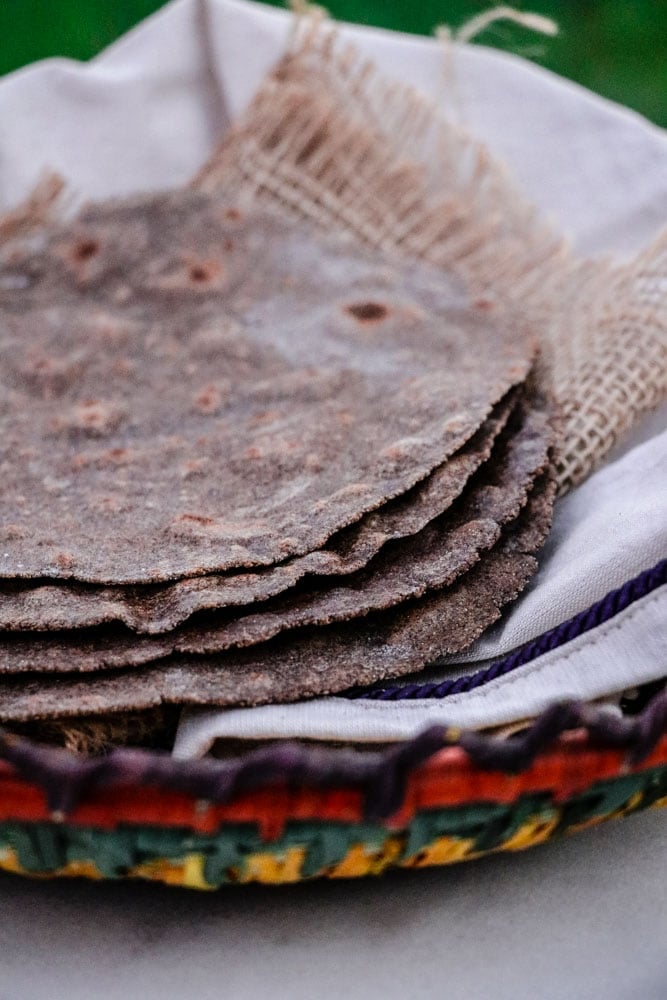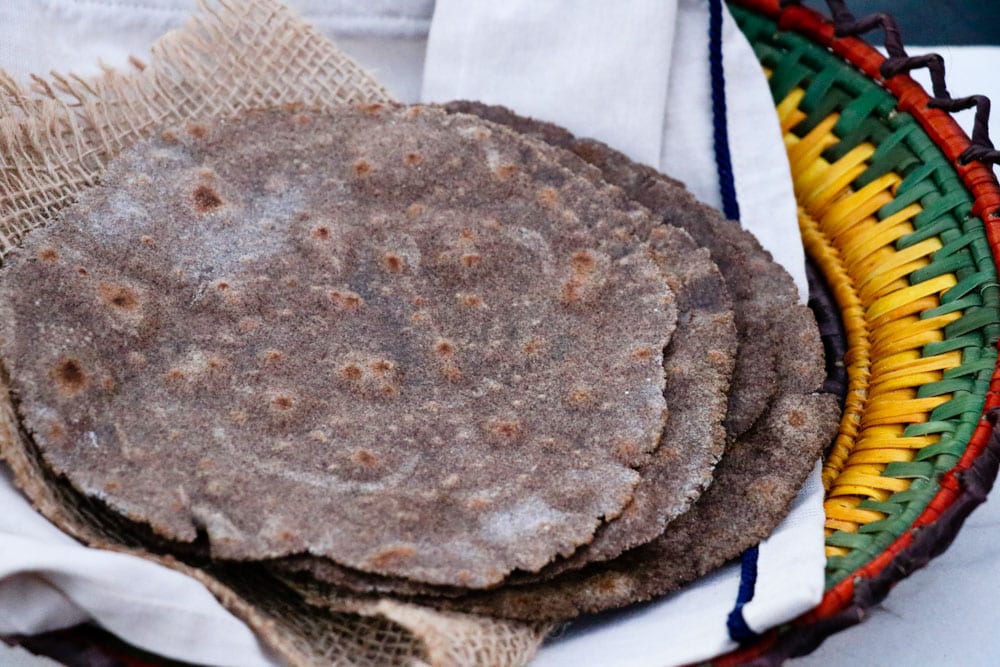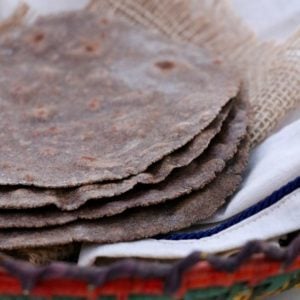Want to save this post? Enter your email below and get it sent straight to your inbox. Plus, get recipes & tips every week! Please enable JavaScript in your browser to complete this form.Please enable JavaScript in your browser to complete this form.Email *Save This!
Buckwheat Roti
Roti, or Chapati, is an unleavened flatbread (or griddle bread) from the South Asian Culture. Enter your email below and get it sent straight to your inbox. Plus, get recipes & tips every week! Though naan serves as the blank canvas with which we scoop up curries in Indian and Pakistani restaurants, we typically eat rotis at home. Naan is reserved for dinner parties or for serving special dishes such as nihari. (Find my gluten-free naan recipe here.) Traditionally, rotis are made of a type of whole wheat flour called atta and are cooked on a round, cast-iron griddle, called a tava. Ideally, rotis are only cooked partly on the tava, and then the tava is removed, the roti is flipped and put directly on a flame. The heat puffs it up and cooks the inside as well. For more resources and videos please take a look at my post on how to make rotis. I suggest you use the dough attachment of a or other stand-mixer to knead the dough. But you won’t need to for this recipe. You can easily make the dough in a couple of minutes for these!
Buckwheat (Kuttu) Flour
Buckwheat flour is nutrient-rich and easier to work with than other gluten-free flours. Buckwheat rotis are surprisingly pliable and offer a distinct, robust taste that complements many curries well, like my smoked eggplant curry. They can also be eaten alone or with jam, honey, or anything else roti or parathas can be eaten with. I even had success with them rolled up as a wrap (with a little breakage).
Tips to make Buckwheat Flour Roti:
The amount of water or milk you add can be tricky, but it will depend on the brand of flour you have. Try to add it in small amounts so that the dough does not become sticky, but remains elastic and smooth. Without a doubt, it’s much easier to make rotis with traditional atta. Atta retains its shape while you pull and tug, roll out and flip-flop the atta between your hands. It all becomes a bit more complicated sans gluten. Don’t worry if you don’t achieve a perfectly round shape. Achieving the round shape with gluten-filled atta is hard enough, so buckwheat rotis need a little more leeway. If you were making regular atta rotis, you would allow the kneaded dough to rest so that the gluten can develop. You may let buckwheat dough rest, and it may make it a little easier to roll them out, but in my opinion, it’s not necessary.
More gluten-free flatbread recipes:
“I Can’t Believe It’s Gluten-Free” Cassava and Sorghum Flour Roti Gluten-Free Quinoa Flour Roti 30-minute No Yeast Egg-Free Naan


